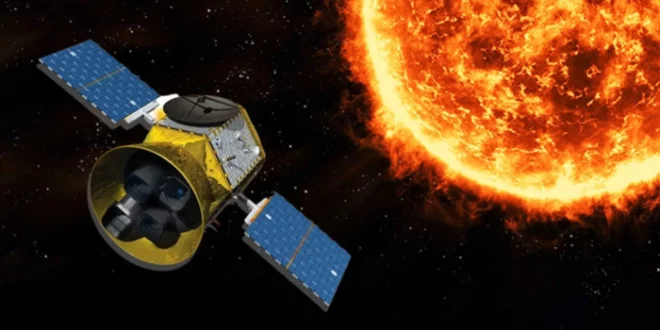Pune. Two scientists from Pune’s prestigious Inter-University Center for Astronomy and Astrophysics (IUCAA) on Friday said they are eagerly awaiting the results of their main payload, which will be launched on September 2 with the ‘Aditya L1’ mission. Will be projected. The satellite related to Surya (f Sun’s) Mission will be launched on Saturday at 11.50 am from the second launch pad of the space center located in Sriharikota. ‘Aditya L1’ is designed to conduct remote observations of the solar corona and actual observations of the solar wind at ‘L1’ (Sun-Earth Lagrangian point) about 15 lakh kilometers from Earth.
Aditya L1 will carry seven payloads, four of which will observe light from the Sun. Scientists Durgesh Tripathi and A.N. have been working for the last 10 years to develop the Solar Ultraviolet Imaging Telescope (SUIT), one of the main payloads of the Aditya-L1 mission. Ramprakash said, “We are very excited.” Tripathi said, “It all started in 2013 when ISRO announced its mission to study the Sun. Then I asked my colleague A.N. Spoke to Ramprakash, who is also a professor at IUCAA. We started working on the project and sought the cooperation of many colleagues from different institutions.
He said, ‘The suit will observe the ultraviolet rays coming from the Sun. These ultraviolet rays originate from the solar atmosphere, mainly from the lower and middle atmosphere of the Sun. We have a variety of scientific filters on SUIT, and by using each filter, we can ‘map’ different heights in the Sun’s atmosphere. He said the main objective is to understand the dynamics in the solar atmosphere.
study of specific parts of the sun
Aditya L-1 will be tasked with studying the dynamics of the Sun’s chromosphere and corona, including coronal heating, the physics of partially ionized plasma, the onset of coronal mass ejections, and an in-depth study of solar flares. This will give scientists an opportunity to make an in-depth study of the Sun’s atmosphere and its complex processes.
And also some processes and events
Through their research, scientists will try to understand the process of coronal mass ejection, irregularly formed solar flares, surface atmosphere and interactions between the two. This observatory will also be helpful in understanding the events of solar emissions and the factors of their origin.
What does India want to achieve from Aditya L-1?
According to ISRO, since the Sun is the nearest star, it is easier to study as compared to other stars. Through Aditya L-1, there is a plan for a detailed study of the Sun’s upper surface i.e. photosphere, chromosphere (atmospheric layer) and corona (the outermost part of the sun). Through Aditya L-1, we can get more information about the stars of other Galaxy. Also, by studying the Sun, the weather and behavior of other planets can also be understood. The data obtained through this mission can prove to be very useful for other future missions, such as Shukrayan or Mars mission.
Which countries have launched missions so far?
Before India, America’s space agency NASA, Europe’s space agency and Germany have separately and jointly sent missions to study the Sun. NASA’s 3 missions- Parker Solar Probe and Iris have been quite popular. The Parker Solar Probe mission is the closest spacecraft to the Sun.
 Indian Thought Latest News & Views
Indian Thought Latest News & Views



